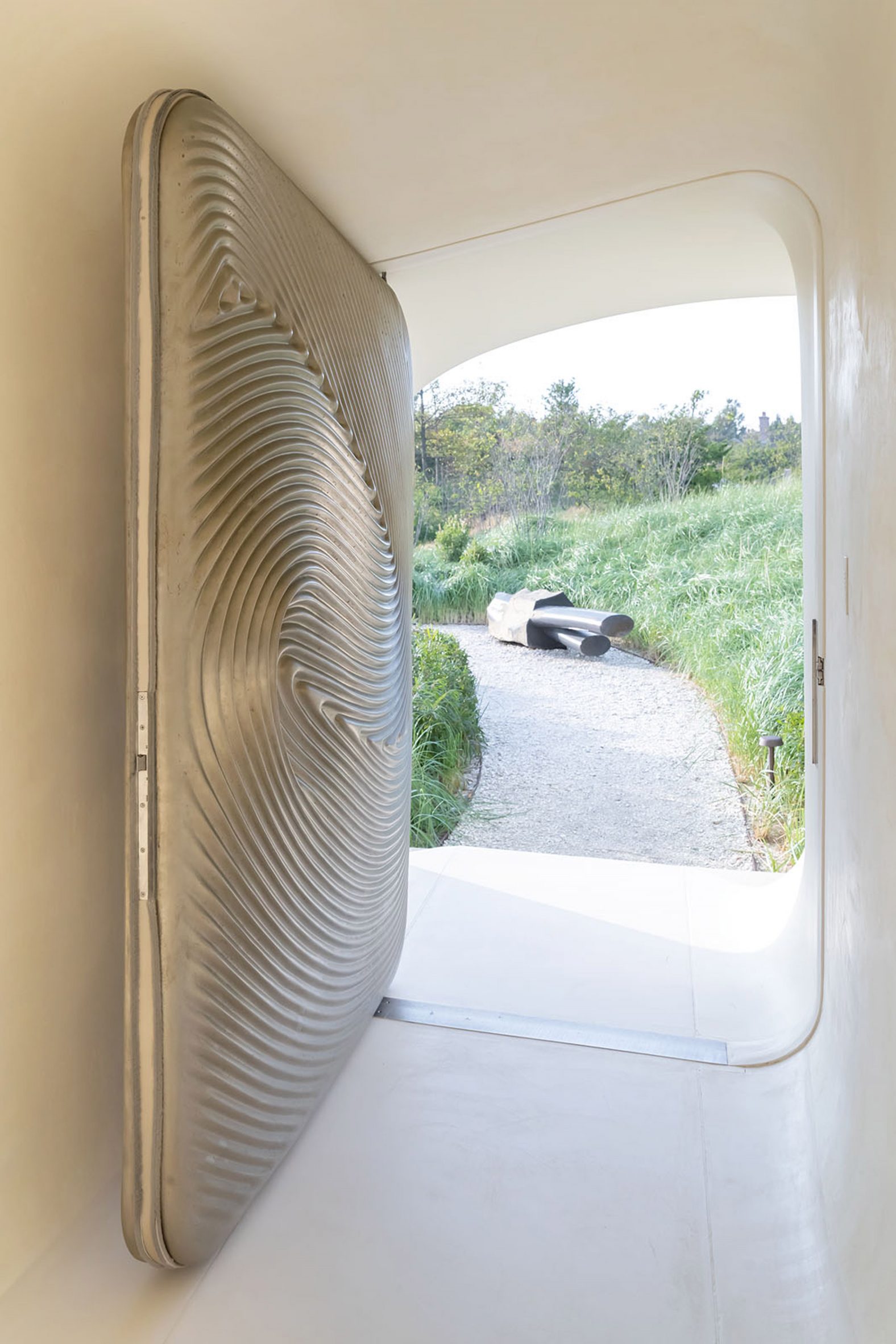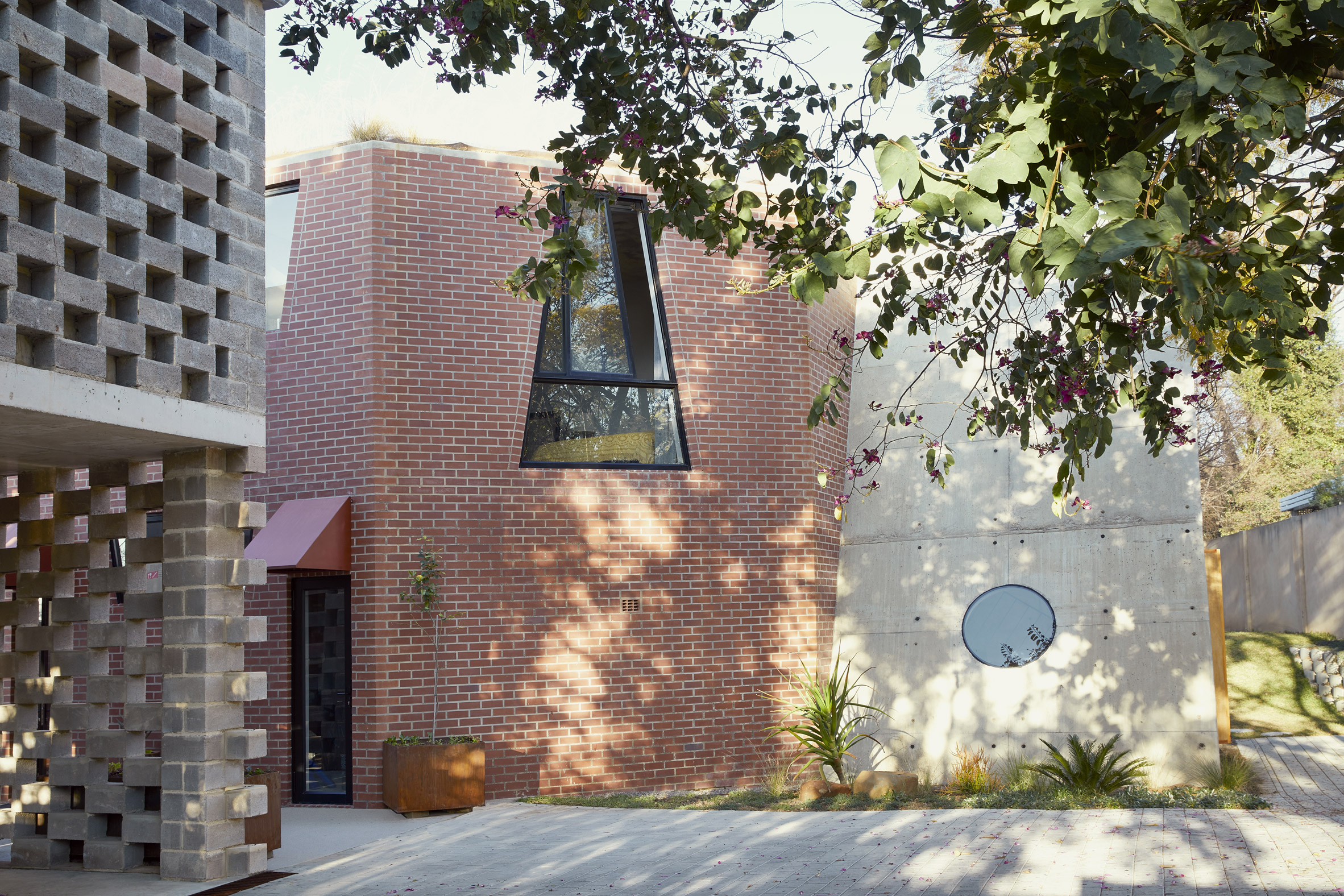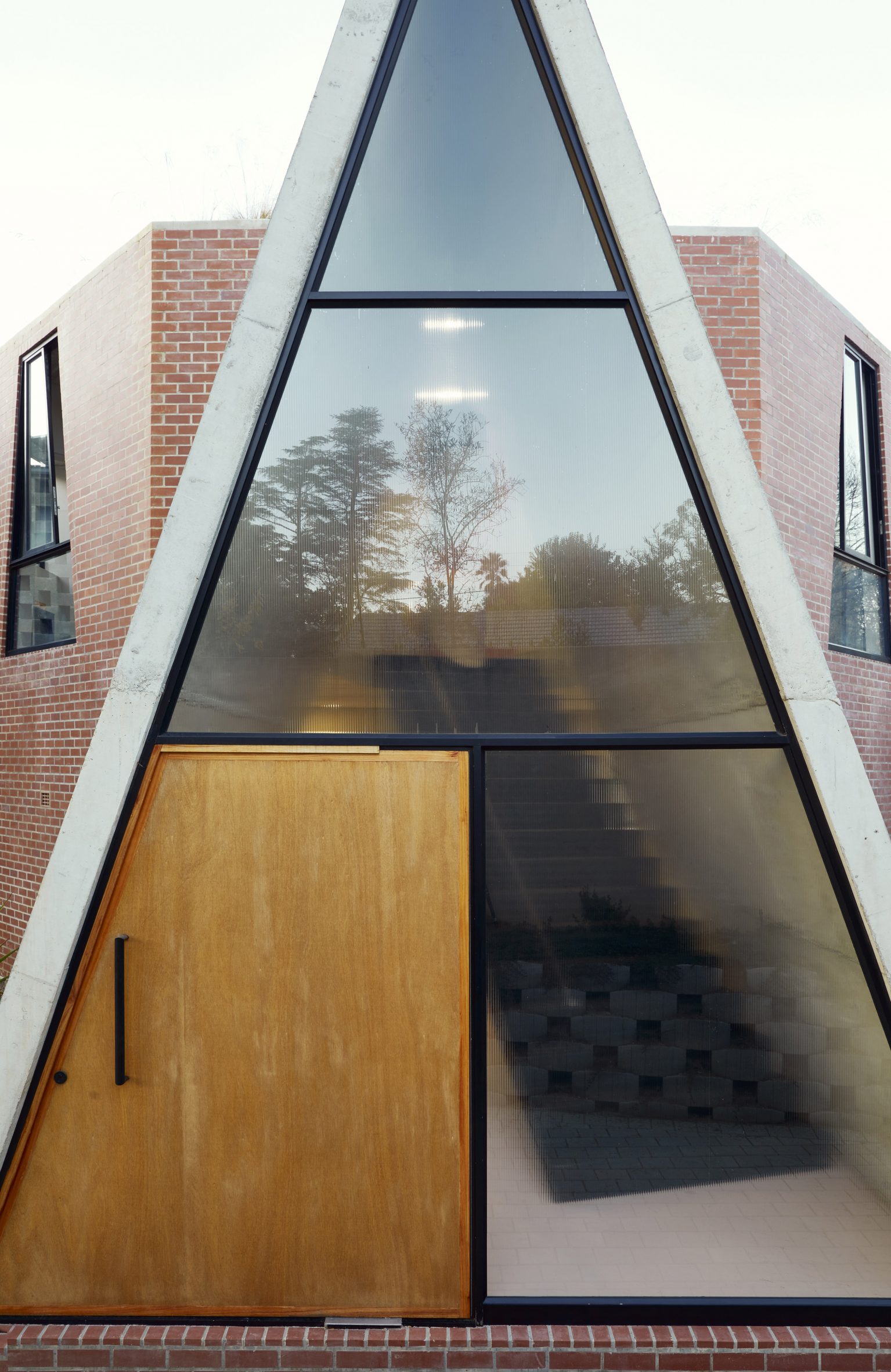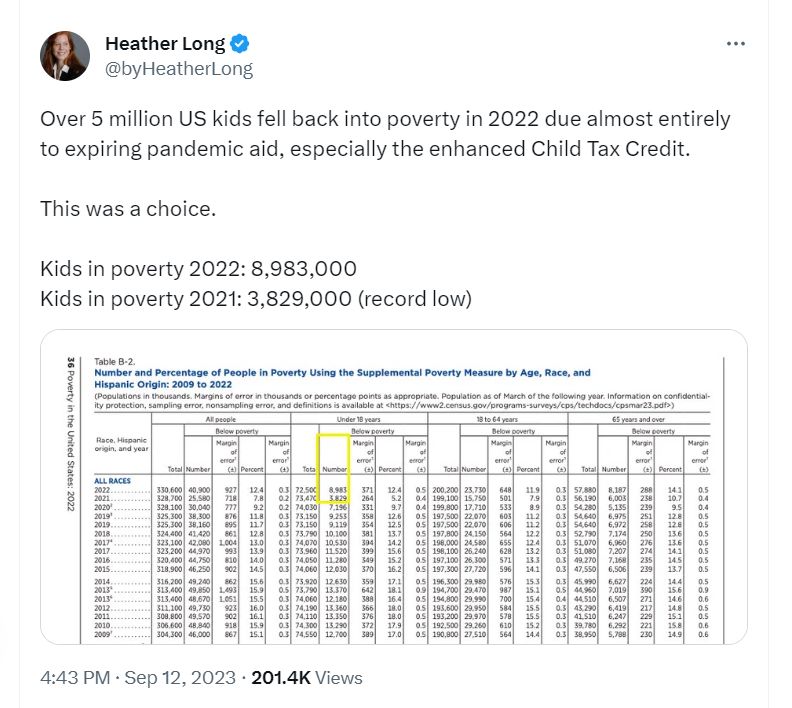Welcome to DU!
The truly grassroots left-of-center political community where regular people, not algorithms, drive the discussions and set the standards.
Join the community:
Create a free account
Support DU (and get rid of ads!):
Become a Star Member
Latest Breaking News
General Discussion
The DU Lounge
All Forums
Issue Forums
Culture Forums
Alliance Forums
Region Forums
Support Forums
Help & Search
Celerity
Celerity's Journal
Celerity's Journal
September 15, 2023

Liberty isn’t when every jerk gets to inconvenience everyone else.
https://prospect.org/world/2023-09-14-nordic-way-of-freedom/

I recently took a reporting trip to Finland (Want to see that reporting? Keep reading the Prospect!), where I rented a car. Driving to my hotel, I was shocked at the incredibly civilized road manners on Finnish highways, thanks in large part to the omnipresent speed cameras and tickets that are assessed as a percentage of one’s income—121,000 euros, in one recent case. To Americans, this might seem like a typical example of nanny-state overreach. For many drivers here, freedom is when you get to drive your giant, powerful, heavy car with total disregard for the law and the safety of other drivers—as I saw on the drive to Newark Airport to catch my flight, during which I was nearly run off the road by a bunch of hooligans swerving through traffic at a hundred miles an hour.
But in reality, the Finland experience reflects a deeper and more mature idea of freedom than the childish selfishness that passes for it in the U.S. Strict traffic rules are a burden, in the sense that one must obey or pay a hefty price. But they also enable a much freer driving experience. With lower speeds in the city, merging, navigating, and other normal driving activities are much more straightforward. Those slow speeds, plus other traffic controls, also make life much safer for pedestrians and cyclists, adding up to a traffic death rate more than two-thirds lower than that of the U.S. Yet the basic point of driving—to get to where you are going—is easier and safer in Finland than in America. You can still take your car just about anywhere, you just can’t do so in a way that infringes on the transportation rights of others.
This conception of freedom can be seen throughout Nordic society. One of the core objectives of the Nordic social democratic welfare state, for instance, is to spread income out over the working life. The average person hits their peak earning years when they are in their forties and fifties, thanks to accumulated raises, greater experience, and so on. But people also need income outside those years—when they are children, or retired and not working at all, or when they are in their twenties and thirties and taking on the extreme expenses of starting a family.

So if you are, say, a 50-year-old Finnish accountant making good money, you are taxed quite heavily to fund benefits for young families and pensioners. But when those parents are in their prime earning years and you’ve retired, they pay for your pension, as well as the families coming up behind them. In this sense, there are powerful and self-interested reasons to support the welfare state—it shifts income from when you need it least to when you need it most, expanding your freedom to start a family when it makes the most biological sense and to retire in relative comfort.
snip
The Nordic Way of Freedom

Liberty isn’t when every jerk gets to inconvenience everyone else.
https://prospect.org/world/2023-09-14-nordic-way-of-freedom/

I recently took a reporting trip to Finland (Want to see that reporting? Keep reading the Prospect!), where I rented a car. Driving to my hotel, I was shocked at the incredibly civilized road manners on Finnish highways, thanks in large part to the omnipresent speed cameras and tickets that are assessed as a percentage of one’s income—121,000 euros, in one recent case. To Americans, this might seem like a typical example of nanny-state overreach. For many drivers here, freedom is when you get to drive your giant, powerful, heavy car with total disregard for the law and the safety of other drivers—as I saw on the drive to Newark Airport to catch my flight, during which I was nearly run off the road by a bunch of hooligans swerving through traffic at a hundred miles an hour.
But in reality, the Finland experience reflects a deeper and more mature idea of freedom than the childish selfishness that passes for it in the U.S. Strict traffic rules are a burden, in the sense that one must obey or pay a hefty price. But they also enable a much freer driving experience. With lower speeds in the city, merging, navigating, and other normal driving activities are much more straightforward. Those slow speeds, plus other traffic controls, also make life much safer for pedestrians and cyclists, adding up to a traffic death rate more than two-thirds lower than that of the U.S. Yet the basic point of driving—to get to where you are going—is easier and safer in Finland than in America. You can still take your car just about anywhere, you just can’t do so in a way that infringes on the transportation rights of others.
This conception of freedom can be seen throughout Nordic society. One of the core objectives of the Nordic social democratic welfare state, for instance, is to spread income out over the working life. The average person hits their peak earning years when they are in their forties and fifties, thanks to accumulated raises, greater experience, and so on. But people also need income outside those years—when they are children, or retired and not working at all, or when they are in their twenties and thirties and taking on the extreme expenses of starting a family.

So if you are, say, a 50-year-old Finnish accountant making good money, you are taxed quite heavily to fund benefits for young families and pensioners. But when those parents are in their prime earning years and you’ve retired, they pay for your pension, as well as the families coming up behind them. In this sense, there are powerful and self-interested reasons to support the welfare state—it shifts income from when you need it least to when you need it most, expanding your freedom to start a family when it makes the most biological sense and to retire in relative comfort.
snip
September 14, 2023




https://twitter.com/RexChapman/status/1702024984493731888
Equal to 14 glazed doughnuts...
https://twitter.com/RexChapman/status/1702024984493731888
September 14, 2023

https://www.washingtonpost.com/national-security/2023/09/14/georgia-trump-case-judge-mcafee/
https://archive.ph/hG1LZ

ATLANTA — A Georgia judge ruled Thursday that Donald Trump and 16 other co-defendants won’t have to go to trial in October with two others who have sought a speedy trial, effectively denying an Atlanta-area prosecutor’s bid to try all 19 together in the sprawling criminal case alleging interference in Georgia’s 2020 presidential election.
Fulton County Superior Court Judge Scott McAfee said in a Thursday order that he could move to sever additional cases but said for now that former Trump campaign attorneys Kenneth Chesebro and Sidney Powell will stand trial beginning Oct. 23. He did not issue a trial date for Trump and 16 other associates, but he denied a bid by former White House chief of staff Mark Meadows and others seeking to pause proceedings while their efforts to move their cases to federal court play out.
McAfee wrote “that severing the remaining 17 co-defendants is simply a procedural and logistical inevitability.” “Severance is an absolute necessity. Additional divisions of these 17 defendants may well be required,” the judge added. “That is a decision for another day once the many anticipated pretrial motions have been resolved and a realistic trial date approaches.”
An Atlanta-area prosecutor leading the case has argued that separate trials would be a “logistical quagmire” for the court system, witnesses and anyone else involved in the case. Setting trial dates will likely be a challenge for McAfee, given an avalanche of motions from the various defendants. Among the challenges: Trump does not want to be tried with anyone seeking a speedy trial, and Meadows wants to stand trial alone, but only after he exhausts his appeals on his request to move his case to federal court.
snip
Trump won't have to stand trial in October, Georgia judge says

https://www.washingtonpost.com/national-security/2023/09/14/georgia-trump-case-judge-mcafee/
https://archive.ph/hG1LZ

ATLANTA — A Georgia judge ruled Thursday that Donald Trump and 16 other co-defendants won’t have to go to trial in October with two others who have sought a speedy trial, effectively denying an Atlanta-area prosecutor’s bid to try all 19 together in the sprawling criminal case alleging interference in Georgia’s 2020 presidential election.
Fulton County Superior Court Judge Scott McAfee said in a Thursday order that he could move to sever additional cases but said for now that former Trump campaign attorneys Kenneth Chesebro and Sidney Powell will stand trial beginning Oct. 23. He did not issue a trial date for Trump and 16 other associates, but he denied a bid by former White House chief of staff Mark Meadows and others seeking to pause proceedings while their efforts to move their cases to federal court play out.
McAfee wrote “that severing the remaining 17 co-defendants is simply a procedural and logistical inevitability.” “Severance is an absolute necessity. Additional divisions of these 17 defendants may well be required,” the judge added. “That is a decision for another day once the many anticipated pretrial motions have been resolved and a realistic trial date approaches.”
An Atlanta-area prosecutor leading the case has argued that separate trials would be a “logistical quagmire” for the court system, witnesses and anyone else involved in the case. Setting trial dates will likely be a challenge for McAfee, given an avalanche of motions from the various defendants. Among the challenges: Trump does not want to be tried with anyone seeking a speedy trial, and Meadows wants to stand trial alone, but only after he exhausts his appeals on his request to move his case to federal court.
snip
September 14, 2023
Antworks: An artist and ants collaborate on an exhibit of 'tiny Abstract Expressionist paintings'
vimeo.com/25976354
https://aeon.co/videos/an-artist-and-ants-collaborate-on-an-exhibit-of-tiny-abstract-expressionist-paintings







September 14, 2023

How Borges and Heisenberg converged on the notion that language both enables and interferes with our grasp of reality
https://aeon.co/essays/borges-and-heisenberg-converged-on-the-slipperiness-of-language

Jorge Luis Borges in Palermo, Sicily in 1984. Photo by Ferdinando Scianna/Magnum

As history’s bloodiest war metastasised from Europe outward, two men – a world apart from each other, and coming from profoundly different disciplines – converged on one fundamentally similar idea. One of the men was a poet and short-fiction writer with middling success in his own country but virtually unknown outside its borders. The other man had already won the Nobel Prize for work he had done around 15 years earlier and would soon top the Allies’ most-wanted list for the work they suspected he had done in Germany’s unsuccessful atomic weapons programme. But while Jorge Luis Borges knew nothing of the advances of quantum mechanics, and while Werner Heisenberg wouldn’t have encountered the work of a man among whose books was one that sold a mere 37 copies on the other side of the world in Argentina, around the year 1942 they were each obsessed with the same question: how does language both enable and interfere with our grasp of reality?
After the resounding failure of History of Eternity (1936), the book that sold only 37 copies in a year and garnered almost no critical attention, Borges slipped into a bog of depression. That book’s philosophical themes, however, continued to percolate and eventually emerged in an entirely different form in a series of stories called Artifices (1944). In that collection’s opening story, Borges describes a man who loses his ability to forget.
The man goes by the names Ireneo Funes. When the narrator of the story meets him, he is still a young man and known in his village for his quirky ability to tell the time whenever he is asked, although he never wears a watch. Two years later, upon his return to the town, the narrator learns that Funes has suffered an accident and is entirely paralysed, confined to his house on the edge of town. The narrator goes to visit him and finds him alone, smoking a cigarette on a cot in the dark. Astonished and saddened by Funes’s change of fortunes, the narrator is even more surprised to learn that the young man doesn’t perceive his condition as a disability, but as a gift. Funes believes the accident has endowed him with perfect memory.
The young man, who has never studied Latin, borrows a Latin dictionary and a copy of Pliny’s Naturalis historia from the narrator. He then greets him on his return by reciting, verbatim, the first paragraph of the 24th chapter of the tome’s seventh book: a passage about memory. However, though his ability to recall is astounding, Funes’s gift extends beyond mere memory. His immersion in the present is so profound, so perfect, that nothing to which his senses are exposed escapes his attention. In a poetic passage, Borges describes Funes’s abilities:
snip
Quantum poetics

How Borges and Heisenberg converged on the notion that language both enables and interferes with our grasp of reality
https://aeon.co/essays/borges-and-heisenberg-converged-on-the-slipperiness-of-language

Jorge Luis Borges in Palermo, Sicily in 1984. Photo by Ferdinando Scianna/Magnum

As history’s bloodiest war metastasised from Europe outward, two men – a world apart from each other, and coming from profoundly different disciplines – converged on one fundamentally similar idea. One of the men was a poet and short-fiction writer with middling success in his own country but virtually unknown outside its borders. The other man had already won the Nobel Prize for work he had done around 15 years earlier and would soon top the Allies’ most-wanted list for the work they suspected he had done in Germany’s unsuccessful atomic weapons programme. But while Jorge Luis Borges knew nothing of the advances of quantum mechanics, and while Werner Heisenberg wouldn’t have encountered the work of a man among whose books was one that sold a mere 37 copies on the other side of the world in Argentina, around the year 1942 they were each obsessed with the same question: how does language both enable and interfere with our grasp of reality?
After the resounding failure of History of Eternity (1936), the book that sold only 37 copies in a year and garnered almost no critical attention, Borges slipped into a bog of depression. That book’s philosophical themes, however, continued to percolate and eventually emerged in an entirely different form in a series of stories called Artifices (1944). In that collection’s opening story, Borges describes a man who loses his ability to forget.
The man goes by the names Ireneo Funes. When the narrator of the story meets him, he is still a young man and known in his village for his quirky ability to tell the time whenever he is asked, although he never wears a watch. Two years later, upon his return to the town, the narrator learns that Funes has suffered an accident and is entirely paralysed, confined to his house on the edge of town. The narrator goes to visit him and finds him alone, smoking a cigarette on a cot in the dark. Astonished and saddened by Funes’s change of fortunes, the narrator is even more surprised to learn that the young man doesn’t perceive his condition as a disability, but as a gift. Funes believes the accident has endowed him with perfect memory.
The young man, who has never studied Latin, borrows a Latin dictionary and a copy of Pliny’s Naturalis historia from the narrator. He then greets him on his return by reciting, verbatim, the first paragraph of the 24th chapter of the tome’s seventh book: a passage about memory. However, though his ability to recall is astounding, Funes’s gift extends beyond mere memory. His immersion in the present is so profound, so perfect, that nothing to which his senses are exposed escapes his attention. In a poetic passage, Borges describes Funes’s abilities:
snip
September 14, 2023



A sloping fibreglass roof and a glass facade characterise New York studio Diller Scofidio + Renfro's first completed single-family residential project, which has been photographed officially for the first time by Iwan Baan. The home was completed in 2017 by Diller Scofidio + Renfro (DS+R) in East Hampton for Museum of Contemporary Art Detroit founder Julie Taubman and her husband, businessman Robert Taubman. It was the studio's first completed residential project and is the subject of a recently published monograph by architectural critic Paul Goldberger – the first public showcase of the home since its completion – for which it was photographed by Baan.


The home, which sits on the Atlantic Double Dunes, has an expressive white roof made from a similar material to that used for the hulls of racing yachts. "The formal language was derived from a deep read of the site in which it sits: the dune," DS+R partner Charles Renfro told Dezeen. However, the concrete foundation and dramatic roofline make the 10,000-square-foot home stand apart from its environment. "It's not like a bunker built into the earth, it's actually intentionally its own thing. It stands out from the dune while taking a lot of its cues from [them]," continued Renfro. "It is really surreal and magical in the whole; the whole roof just feels like it's floating."


"Neither a conventional floor plan nor a conventional section drawing is of much help in understanding how the interior of the house works," Goldberger wrote. "It could be described as split-level, since the entry is at an intermediate level, and all the main living spaces are either up or down a half or full flight of stairs from there." On top of this dune-like procession of spaces is the sculptural roof with a "compound curvature," according to Renfro. This was made by cladding the foam monocoque structure with Glass Fiber Reinforced Polymer (GFRP), fabricated by aerospace design firm Janicki Industries in Seattle. Renfro told Dezeen that the material was chosen because the original plan, to use concrete, proved to be too expensive and too heavy.


"We got to take about two-thirds of the steel out of the house," said Renfro. "So we saved that money and then the roof itself was less expensive. I mean, it's made like a surfboard." Blue Dream's interiors are also dune-like, with walls sloping in mounts towards the ceilings, both of which are made from waxed microconcrete. The continuation of this material along the ceilings, walls and flooring creates a smooth consistency throughout the house. Many of the stairways were formed from the same material, with slight indentations creating circulation throughout the stepped living spaces and more angular stairways leading up and down to the bedrooms. Circulation was provided outside the house as well, with a series of stairways connecting the different floors on one side and leading to an outdoor living space and pool on the other. A rooftop lounge area was also included.
snip


Diller Scofidio + Renfro's "surreal and magical" Blue Dream house in the Hamptons
https://www.dezeen.com/2023/09/13/diller-scofidio-renfros-blue-dream-the-hamptons/


A sloping fibreglass roof and a glass facade characterise New York studio Diller Scofidio + Renfro's first completed single-family residential project, which has been photographed officially for the first time by Iwan Baan. The home was completed in 2017 by Diller Scofidio + Renfro (DS+R) in East Hampton for Museum of Contemporary Art Detroit founder Julie Taubman and her husband, businessman Robert Taubman. It was the studio's first completed residential project and is the subject of a recently published monograph by architectural critic Paul Goldberger – the first public showcase of the home since its completion – for which it was photographed by Baan.


The home, which sits on the Atlantic Double Dunes, has an expressive white roof made from a similar material to that used for the hulls of racing yachts. "The formal language was derived from a deep read of the site in which it sits: the dune," DS+R partner Charles Renfro told Dezeen. However, the concrete foundation and dramatic roofline make the 10,000-square-foot home stand apart from its environment. "It's not like a bunker built into the earth, it's actually intentionally its own thing. It stands out from the dune while taking a lot of its cues from [them]," continued Renfro. "It is really surreal and magical in the whole; the whole roof just feels like it's floating."


"Neither a conventional floor plan nor a conventional section drawing is of much help in understanding how the interior of the house works," Goldberger wrote. "It could be described as split-level, since the entry is at an intermediate level, and all the main living spaces are either up or down a half or full flight of stairs from there." On top of this dune-like procession of spaces is the sculptural roof with a "compound curvature," according to Renfro. This was made by cladding the foam monocoque structure with Glass Fiber Reinforced Polymer (GFRP), fabricated by aerospace design firm Janicki Industries in Seattle. Renfro told Dezeen that the material was chosen because the original plan, to use concrete, proved to be too expensive and too heavy.


"We got to take about two-thirds of the steel out of the house," said Renfro. "So we saved that money and then the roof itself was less expensive. I mean, it's made like a surfboard." Blue Dream's interiors are also dune-like, with walls sloping in mounts towards the ceilings, both of which are made from waxed microconcrete. The continuation of this material along the ceilings, walls and flooring creates a smooth consistency throughout the house. Many of the stairways were formed from the same material, with slight indentations creating circulation throughout the stepped living spaces and more angular stairways leading up and down to the bedrooms. Circulation was provided outside the house as well, with a series of stairways connecting the different floors on one side and leading to an outdoor living space and pool on the other. A rooftop lounge area was also included.
snip


September 14, 2023




A collision of geometric forms in contrasting brick and concrete defines Great Primary Shapes House, a dwelling in South Africa designed by local architect Gregory Katz. Commissioned by a couple with a "distaste for the ordinary", the four-bedroom home in a suburb of Johannesburg is made up of squares, circles, triangles and an octagon.




The concept for the 275-square-metre home came from Euclid's Elements, a book by the ancient Greek mathematician Euclid that Katz was reading while working on the design. "As I delved into the book, I became captivated by the idea of creating a structure where the exterior of each shape is composed of different materials, while the interior materials remained consistent, thereby unifying the spaces," explained Katz.




The entrance to Great Primary Shapes House is a triangular form with exposed concrete walls, circular side windows and a fully-glazed frontage. It is connected to one side of a two-storey octagonal brick form, which is punctured by trapezoidal windows and contains a large dining and kitchen area. The entrance leads to a short corridor where sliding glass doors open onto the garden. It also leads through to a cylindrical concrete volume, where a living space is illuminated by a high-level, semicircular window.




On the west side of the home is a cuboid form built from perforated blockwork. Topped with solar panels, it contains a garage, gym and guest apartment and adjoins a small circular space containing utility areas. To the east, an oval-shaped swimming pool is wrapped by a garden terrace connecting to paved paths that lead around the sides of the home and link its various forms.
snip





Gregory Katz merges clashing geometries for South African home
https://www.dezeen.com/2023/09/12/gregory-katz-great-primary-shapes-house/



A collision of geometric forms in contrasting brick and concrete defines Great Primary Shapes House, a dwelling in South Africa designed by local architect Gregory Katz. Commissioned by a couple with a "distaste for the ordinary", the four-bedroom home in a suburb of Johannesburg is made up of squares, circles, triangles and an octagon.




The concept for the 275-square-metre home came from Euclid's Elements, a book by the ancient Greek mathematician Euclid that Katz was reading while working on the design. "As I delved into the book, I became captivated by the idea of creating a structure where the exterior of each shape is composed of different materials, while the interior materials remained consistent, thereby unifying the spaces," explained Katz.




The entrance to Great Primary Shapes House is a triangular form with exposed concrete walls, circular side windows and a fully-glazed frontage. It is connected to one side of a two-storey octagonal brick form, which is punctured by trapezoidal windows and contains a large dining and kitchen area. The entrance leads to a short corridor where sliding glass doors open onto the garden. It also leads through to a cylindrical concrete volume, where a living space is illuminated by a high-level, semicircular window.




On the west side of the home is a cuboid form built from perforated blockwork. Topped with solar panels, it contains a garage, gym and guest apartment and adjoins a small circular space containing utility areas. To the east, an oval-shaped swimming pool is wrapped by a garden terrace connecting to paved paths that lead around the sides of the home and link its various forms.
snip





September 13, 2023

Earlier this year, my wife and I began receiving a series of medical bills for visits we were certain had been covered and paid by our insurance weeks—in some cases, months—earlier. As the debt started piling up, we began to panic. What was happening? We quickly learned that, due to a glitch in her employer’s benefits system, we’d been booted from our coverage. Not just going forward, but retroactively for the past year and a half. After weeks of sleepless nights, tense phone calls and negotiations, and legal wrangling, we were able to fix the situation and avoid thousands of dollars of medical debt.
But we’re still dealing with it. Just this morning, I had to contact our provider because another bill had fallen through the cracks. The automated system was supposed to make life simpler for her employer and for us, instead it had led to weeks of headaches and labor. We were lucky that we had the time and resources to figure out what exactly went wrong and to fix the problem.
It would’ve been so easy to fall under an avalanche of debt with no real hope for clawing our way out (certainly not with a journalist’s salary). That experience was on my mind this morning as I read through the latest story by KFF Health News, spotlighting the thousands of Americans being pushed into homelessness by medical debt.
As you’ll read below, “Nationwide, about 100 million people have some form of health care debt. Of those, about 1 in 5 said the debts have forced them to change their living situation, including moving in with friends or family, according to a 2022 KFF poll.” As the cost of healthcare and housing both climb, millions of families are living on the edge. Medical bills can decimate credit scores, making apartments unattainable. But as you’ll read, some states are trying to address the crisis.
What’s on your mind? Got a topic you want covered in a future newsletter? Shoot me a note at jhammontree@reckonmedia.com
the article
https://www.reckon.news/news/2023/09/a-father-dreamed-of-a-home-for-his-family-medical-debt-nearly-pushed-them-onto-the-streets.html
snip
A Downward Spiral
Medical debt can undermine housing security in several ways. For some, it depresses credit scores, making it difficult to get a lease or a mortgage. Last year, about 1 in 8 U.S. consumers with a credit report had a medical debt listed on it, according to the nonprofit Urban Institute.
Patients with chronic medical conditions may fall behind on rent or home payments as they scramble to keep medical debts in check to preserve access to health care. Many hospitals and other providers will turn away patients with outstanding bills, KFF Health News found. Denise Beasley, who also assists clients at CEDP in Denver, said many older people, who typically depend most on physicians and medications, believe they must pay their medical and pharmacy bills before anything else. “The elderly are terrified,” she said.
For others, such debt can compound financial struggles brought on by an accident or unexpected illness that forces them to stop working, jeopardizing their health coverage or ability to pay for housing. In Seattle, researchers found widespread medical debt among residents in homeless encampments. And those with such debt tended to experience homelessness two years longer than encampment residents without it.
More broadly, people with medical debt are more likely to say the debt has caused them to be turned down for a rental or a mortgage than people with student loans or credit card debt, according to a 2019 nationwide survey of renters, homebuyers, and property owners by real estate company Zillow.
snip
Medical debt is pushing Americans into homelessness (email newsletter snippet plus an article)
the newsletter email part (there is no ink):

Earlier this year, my wife and I began receiving a series of medical bills for visits we were certain had been covered and paid by our insurance weeks—in some cases, months—earlier. As the debt started piling up, we began to panic. What was happening? We quickly learned that, due to a glitch in her employer’s benefits system, we’d been booted from our coverage. Not just going forward, but retroactively for the past year and a half. After weeks of sleepless nights, tense phone calls and negotiations, and legal wrangling, we were able to fix the situation and avoid thousands of dollars of medical debt.
But we’re still dealing with it. Just this morning, I had to contact our provider because another bill had fallen through the cracks. The automated system was supposed to make life simpler for her employer and for us, instead it had led to weeks of headaches and labor. We were lucky that we had the time and resources to figure out what exactly went wrong and to fix the problem.
It would’ve been so easy to fall under an avalanche of debt with no real hope for clawing our way out (certainly not with a journalist’s salary). That experience was on my mind this morning as I read through the latest story by KFF Health News, spotlighting the thousands of Americans being pushed into homelessness by medical debt.
As you’ll read below, “Nationwide, about 100 million people have some form of health care debt. Of those, about 1 in 5 said the debts have forced them to change their living situation, including moving in with friends or family, according to a 2022 KFF poll.” As the cost of healthcare and housing both climb, millions of families are living on the edge. Medical bills can decimate credit scores, making apartments unattainable. But as you’ll read, some states are trying to address the crisis.
What’s on your mind? Got a topic you want covered in a future newsletter? Shoot me a note at jhammontree@reckonmedia.com
the article
https://www.reckon.news/news/2023/09/a-father-dreamed-of-a-home-for-his-family-medical-debt-nearly-pushed-them-onto-the-streets.html
snip
A Downward Spiral
Medical debt can undermine housing security in several ways. For some, it depresses credit scores, making it difficult to get a lease or a mortgage. Last year, about 1 in 8 U.S. consumers with a credit report had a medical debt listed on it, according to the nonprofit Urban Institute.
Patients with chronic medical conditions may fall behind on rent or home payments as they scramble to keep medical debts in check to preserve access to health care. Many hospitals and other providers will turn away patients with outstanding bills, KFF Health News found. Denise Beasley, who also assists clients at CEDP in Denver, said many older people, who typically depend most on physicians and medications, believe they must pay their medical and pharmacy bills before anything else. “The elderly are terrified,” she said.
For others, such debt can compound financial struggles brought on by an accident or unexpected illness that forces them to stop working, jeopardizing their health coverage or ability to pay for housing. In Seattle, researchers found widespread medical debt among residents in homeless encampments. And those with such debt tended to experience homelessness two years longer than encampment residents without it.
More broadly, people with medical debt are more likely to say the debt has caused them to be turned down for a rental or a mortgage than people with student loans or credit card debt, according to a 2019 nationwide survey of renters, homebuyers, and property owners by real estate company Zillow.
snip
September 13, 2023
https://www.thrillist.com/news/nation/wellington-new-zealand-hiring-americans-work

This is your sign to pack your bags and literally move across the planet. Wellington, New Zealand's capital, has just introduced a new push aimed at recruiting people from the US, the UK, and the rest of the world to move to the city and start working there, building a new life in a new country.
Dubbed "ESC to Wellington," the new recruiting campaign by WellingtonNZ (the region's economic development agency) highlights all the wins and gains you'd get by moving to the New Zealand city. In addition to gorgeous landscapes and scenery, Wellington is portraying itself as an ideal city to live in if you really want to improve the quality of your life.
According to the Global Liveability Index 2023, Wellington is 23rd on the ranking of most livable places in the world, and it's constantly improving, too. Compared to last year, the city has moved up by 35 places, and it flaunts crucial traits such as safety, walkability, and location of emergency services. Plus, the work-life balance is great too—cost of living is lower than NYC, and salaries are the highest compared to the rest of New Zealand.
If you're a person who loves to get around and do stuff, Wellington says it is the place for you. From sports to film, it is a renowned cultural hub, and it is constantly hosting world-class events and activities for everyone. Add to that that thanks to increased flight service from the US, New Zealand is now incredibly easy to reach, and you're golden! Career-wise, you're pretty much set too. Currently, the city is flaunting more than 3,000 openings in a variety of fields, including tech and business, among many others.
snip
the campaign's website:
Escape to Wellington
https://www.wellingtonnz.com/esc
Job Listings
https://www.seek.co.nz/jobs/in-All-Wellington
New Zealand Really, Really Wants Americans to Move There for Work
The nation's capital just launched a new recruiting campaign.https://www.thrillist.com/news/nation/wellington-new-zealand-hiring-americans-work

This is your sign to pack your bags and literally move across the planet. Wellington, New Zealand's capital, has just introduced a new push aimed at recruiting people from the US, the UK, and the rest of the world to move to the city and start working there, building a new life in a new country.
Dubbed "ESC to Wellington," the new recruiting campaign by WellingtonNZ (the region's economic development agency) highlights all the wins and gains you'd get by moving to the New Zealand city. In addition to gorgeous landscapes and scenery, Wellington is portraying itself as an ideal city to live in if you really want to improve the quality of your life.
According to the Global Liveability Index 2023, Wellington is 23rd on the ranking of most livable places in the world, and it's constantly improving, too. Compared to last year, the city has moved up by 35 places, and it flaunts crucial traits such as safety, walkability, and location of emergency services. Plus, the work-life balance is great too—cost of living is lower than NYC, and salaries are the highest compared to the rest of New Zealand.
If you're a person who loves to get around and do stuff, Wellington says it is the place for you. From sports to film, it is a renowned cultural hub, and it is constantly hosting world-class events and activities for everyone. Add to that that thanks to increased flight service from the US, New Zealand is now incredibly easy to reach, and you're golden! Career-wise, you're pretty much set too. Currently, the city is flaunting more than 3,000 openings in a variety of fields, including tech and business, among many others.
snip
the campaign's website:
Escape to Wellington
https://www.wellingtonnz.com/esc
Job Listings
https://www.seek.co.nz/jobs/in-All-Wellington
September 13, 2023

New Census Bureau statistics show that abandoning the successful anti-poverty interventions of the pandemic has put the nation right back where it started.
https://prospect.org/economy/2023-09-13-poverty-yo-yo/
If the guys from Men in Black wiped your memory clean with a neuralyzer and erased the years 2020 and 2021 (which wouldn’t be such a bad idea), you would have greeted yesterday’s release of the Census Bureau’s 2022 Income, Poverty and Health Insurance reports with mostly a shrug. The Supplemental Poverty Measure (which includes taxes and transfer payments and other factors, providing a more credible picture of a person’s financial picture) shows that poverty rose modestly from 2019 to 2022, from 11.8 percent to 12.4 percent. For children under 18, poverty actually fell slightly, from 12.6 percent to 12.4 percent. There is a problem among seniors, where poverty is rising, from 12.8 percent in 2019 to 14.1 percent in 2022.
Reading these figures, you get the sense of a country that still has nagging problems with poverty, despite near record-low unemployment and national wealth. And you can see the higher cost of living as contributing to this struggle. But if you have any memory of 2020 and 2021, the story becomes quite a bit more tragic. In 2020, the onset of the COVID pandemic led the United States to scramble to construct a working social safety net on the fly, to account for the fact that millions of people would be either out of work or confined to their homes. Congress provided three rounds of cash payments, and boosted weekly unemployment insurance to a level well above poverty, not to mention many workers’ incomes. In 2021, the American Rescue Plan enhanced the Child Tax Credit, increasing its value, making it a monthly advance payment, and removing the work requirement so the very poor were included for the first time.
This all combined with boosted food aid, expansion of the Medicaid rolls, rental assistance, a bigger Earned Income Tax Credit, and other supports. The results are clear in the poverty statistics. It turns out you can cure a lack of money by simply delivering wads of cash. In 2020, the Supplemental Poverty Measure for all people dropped from 11.8 percent to 9.2 percent. In 2021, it fell even further, to 7.8 percent. Only in 2022, after the checks stopped coming and unemployment retreated to its miserly level and the enhanced Child Tax Credit and other measures expired, did poverty shoot back up again. For children, the sequence goes: 12.6 percent in 2019, 9.7 percent in 2020, an incredible 5.2 percent in 2021, and all the way back to 12.4 percent in 2022.
That translates into 5.1 million kids moving back into poverty, with all the trauma and long-term damage associated with that, because Congress couldn’t be bothered to continue a program that was working to eradicate it from American life. Specifically, because congressional Republicans and Joe Manchin, who refused to extend the enhanced Child Tax Credit on the grounds that parents used the money to buy drugs, couldn’t be bothered. “A spike in child poverty like this didn’t need to happen. Congress had the chance to extend these programs that would keep our children fed and boost working families out of poverty. But it didn’t. It’s shameful,” Sen. John Fetterman (D-PA) said in a statement.
https://twitter.com/byHeatherLong/status/1701607561513091376
snip
snapshot of the tweet


The Poverty Yo-Yo

New Census Bureau statistics show that abandoning the successful anti-poverty interventions of the pandemic has put the nation right back where it started.
https://prospect.org/economy/2023-09-13-poverty-yo-yo/
If the guys from Men in Black wiped your memory clean with a neuralyzer and erased the years 2020 and 2021 (which wouldn’t be such a bad idea), you would have greeted yesterday’s release of the Census Bureau’s 2022 Income, Poverty and Health Insurance reports with mostly a shrug. The Supplemental Poverty Measure (which includes taxes and transfer payments and other factors, providing a more credible picture of a person’s financial picture) shows that poverty rose modestly from 2019 to 2022, from 11.8 percent to 12.4 percent. For children under 18, poverty actually fell slightly, from 12.6 percent to 12.4 percent. There is a problem among seniors, where poverty is rising, from 12.8 percent in 2019 to 14.1 percent in 2022.
Reading these figures, you get the sense of a country that still has nagging problems with poverty, despite near record-low unemployment and national wealth. And you can see the higher cost of living as contributing to this struggle. But if you have any memory of 2020 and 2021, the story becomes quite a bit more tragic. In 2020, the onset of the COVID pandemic led the United States to scramble to construct a working social safety net on the fly, to account for the fact that millions of people would be either out of work or confined to their homes. Congress provided three rounds of cash payments, and boosted weekly unemployment insurance to a level well above poverty, not to mention many workers’ incomes. In 2021, the American Rescue Plan enhanced the Child Tax Credit, increasing its value, making it a monthly advance payment, and removing the work requirement so the very poor were included for the first time.
This all combined with boosted food aid, expansion of the Medicaid rolls, rental assistance, a bigger Earned Income Tax Credit, and other supports. The results are clear in the poverty statistics. It turns out you can cure a lack of money by simply delivering wads of cash. In 2020, the Supplemental Poverty Measure for all people dropped from 11.8 percent to 9.2 percent. In 2021, it fell even further, to 7.8 percent. Only in 2022, after the checks stopped coming and unemployment retreated to its miserly level and the enhanced Child Tax Credit and other measures expired, did poverty shoot back up again. For children, the sequence goes: 12.6 percent in 2019, 9.7 percent in 2020, an incredible 5.2 percent in 2021, and all the way back to 12.4 percent in 2022.
That translates into 5.1 million kids moving back into poverty, with all the trauma and long-term damage associated with that, because Congress couldn’t be bothered to continue a program that was working to eradicate it from American life. Specifically, because congressional Republicans and Joe Manchin, who refused to extend the enhanced Child Tax Credit on the grounds that parents used the money to buy drugs, couldn’t be bothered. “A spike in child poverty like this didn’t need to happen. Congress had the chance to extend these programs that would keep our children fed and boost working families out of poverty. But it didn’t. It’s shameful,” Sen. John Fetterman (D-PA) said in a statement.
https://twitter.com/byHeatherLong/status/1701607561513091376
snip
snapshot of the tweet


Profile Information
Gender: FemaleHometown: London
Home country: US/UK/Sweden
Current location: Stockholm, Sweden
Member since: Sun Jul 1, 2018, 07:25 PM
Number of posts: 43,493
